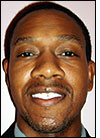Mallinckrodt Pharmaceuticals, a division of Tyco Healthcare that formulates, manufactures and distributes generic drugs, is no newcomer to RFID. Since 2004, Mallinckrodt has been tagging bulk bottles of select strengths of the generic oxycodone and acetaminophen painkillers its Hobart, N.Y., distribution center ships to select Wal-Mart locations. Last September, however, the firm announced it was looking to broaden its use of the technology by tracking more products with RFID (see Generic Drugmaker to Pilot RFID).
Darrell Biggs, senior RFID project engineer for Mallinckrodt Pharmaceuticals, reports that last year, his company put out a request for proposals to obtain a consultancy’s help in furthering its RFID deployment. “We received several responses, and we decided to go with Unisys,” says Biggs. “Unisys conducted a business case analysis, finalized in December of 2005. Out of that, we’ve revamped our RFID roadmap. It showed there are areas where we are—and are not—going to get value from RFID.”
In developing the business case analysis, Unisys conducted a number of studies for Mallinckrodt and brought together a cross-functional team of key personnel, including senior executives and leads from Mallinckrodt’s information services and marketing departments. Unisys conducted walk-throughs at the drugmaker’s facilities, interviewing people at its distribution center to ascertain how growing the quantity of items carrying RFID tags might impact its current business processes. The firm also studied the potential costs of integrating RFID into material-handling scenarios other than manually applying the tags. It compared the costs of integrated and automated approaches, such as adding automated application to the packaging line, with the benefits and long-term cost-savings they would provide.
“I was amazed by how difficult it was to look at everything,” says Biggs. “To do a really good business case is really harder than you’d expect.”
Based on the findings of the business case analysis, Biggs explains, the company is moving this quarter from the EPC Gen 1 Class 1 passive UHF tags it currently hand-applies to select drugs at its distribution center, to Gen 2 Class 1 passive UHF tags. By the end of the fourth quarter, Mallinckrodt will also begin testing the automatic application of tags in its packaging line. RFID inlays will be applied and encoded, then the encoded data will be verified and collected by interrogators and automatic application devices built into the packaging line. Biggs will not discuss all of the vendors that will enable this system, though he does say Mallinckrodt will continue its partnership with ADT Security Services, a Boca Raton, Fla.-based unit of Tyco Fire & Security, which provides Sensormatic Agile 2 UHF readers and antennas for Mallinckrodt’s Wal-Mart tagging deployment.
When Mallinckrodt announced its intentions in September to expand its product tagging at the item level, it had not yet decided whether it would begin using high-frequency (HF) tags in the pilot or stick with UHF tags. However, because Mallinckrodt has, until now, been able to read and write to the EPC Gen 1 UHF tags it places on select products, it expects the Gen 2 tags it will be using in the DC and the packaging line will provide similarly good performance.
Pfizer and GlaxoSmithKline both launched RFID tagging pilots this year. The companies have chosen to use HF tags on individual bottles, with UHF tags for the cases in which the bottles are shipped. Over the past few months, debate has grown within the RFID industry over whether UHF tags can perform as well as HF tags for item-level applications. This year, ODIN Technologies subjected HF and UHF tags on the market to head-to-head tests, declaring HF the better performing frequency for item-level pharmaceutical applications (see Study Says HF Rules for Pharma Items) Within days of that report, however, Seattle-based semiconductor Impinj contributed to an RFID Journal webinar on item-level tagging in which he claimed Impinj had prototyped new UHF tag antenna designs enabling the tags to perform as well as—if not better than—HF tags, especially on products containing RF-unfriendly liquids (see Wal-Mart Seeks UHF for Item-Level).
If the Gen 2 passive UHF tags Mallinckrodt initially tests on its packaging line provide the readability and encoding speeds the auto-apply system requires, this will keep additional infrastructure costs to a minimum. The company will then be able to continue using the UHF interrogators its DC currently operates.
“When we move to the packaging line, we have to reevaluate tag performance,” says Biggs. “We’ve not done an HF study at that stage, but going forward, we might. We have some liquid products that we will have to tag, so that is going to be a consideration with respect to the performance of the tags.” It is also important that any auto-apply system Mallinckrodt deploys not significantly impact the speed at which it can package and label its product.


